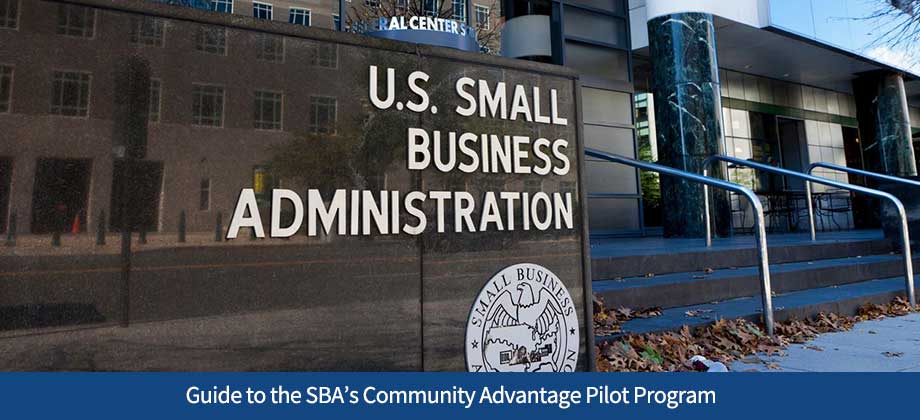Guide to the SBA’s Community Advantage Pilot Program

In mid-November, Senator Ben Cardin (D-Md.) presented a bill that would improve upon and make the Small Business Administration’s (SBA) Community Advantage (CA) pilot program permanent. As the Chairman of the U.S. Senate Committee on Small Business & Entrepreneurship, he noted “The Community Advantage pilot program has proven to be an effective tool in reaching traditionally underserved entrepreneurs… minority and women-owned businesses are the fastest-growing groups of firms in the U.S, yet they are 2 to 3 times more likely to be denied loans than non-minority business owners. The CA program helps close this credit gap, and I am proud to introduce legislation to codify the program and address this inequity for hardworking entrepreneurs.” If you aren’t aware of this program, it was first introduced by the Obama Administration in 2011 and has remained popular. Today, President Biden’s Administration continues to be a huge proponent and extended the program by another 2 years–until September 30, 2024. Senator Cardin has made several pushes over the years to make this pilot program permanent: in 2019, 2020, and 2021.
What is the Community Advantage pilot program?
At its core, the CA pilot program aims to help small businesses in underserved markets. This SBA loan falls under the 7(a) program, however it differs from it in a few ways. First of all, SBA 7(a) loans are issued by SBA lenders that include banks from the national down to the loan level; the CA loans, however, are issued by specially selected lenders that are enrolled in the program. This includes:
- Certified development companies (CDCs)
- Microloan program intermediaries
- Intermediary lending pilot (ILP) program intermediaries
- Non-federally regulated Community Development Financial Institutions (CDFIs) certified by the U.S. Treasury Department
It’s required that these organizations apply to be CA lenders and maintain loan portfolios showing they are helping businesses in underserved markets.
A typical SBA loan requires recipients to have a pretty decent credit score. But due to the nature of the CA loan and its mission to serve underserved communities, CA lenders are able to submit applicants with lower credit scores (as low as 140, in fact). The loans can be used by small businesses for nearly anything–purchasing real estate, making renovations, refinancing debt, or buying new equipment. It’s important to note they cannot be used for revolving lines of credit.
Low interest rates and longer repayment terms are some of the key highlights of these SBA Community Advantage loans. While they are generally smaller than traditional SBA loans (up to $350,000), they feature a maximum interest rate of the prime rate plus 6.5 percent; loan rates fall anywhere between 7 to 9 percent.
What are the requirements?
In order to apply for a CA loan, a certain set of requirements will need to be met. Applicants must:
- Be a for-profit business in an eligible industry operating in the U.S.
- Be considered a “small business,” according to the definition from the SBA
- Have tried and exhausted other “traditional” financing options
- Have invested at least a portion of their own time and money into the business
- Be able to show “good character” and the ability to repay the loan
- Have never defaulted on any government-guaranteed business loans in the past
To apply, you’ll need to first locate a CA lender. Head over to the SBA’s website and search for one in your area. In the meantime, we’ll continue to keep an eye on this important legislation and whether or not Senator Cardin’s efforts to codify it are a success.
There are continually new regulations, grants, and programs for small businesses, and we realize it can be tricky to keep up. Make it a point to visit the Financial Pantry regularly to stay updated on the latest news and trends for small business owners like you. And while you’re with us, check out the incredible loan solutions we offer. From Flex Pay loans to a revolving line of credit, our experts are ready to help create the best product for your small business needs.

